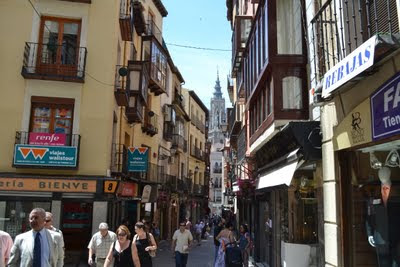 |
| Nexium everywhere but no capacity for Doxil |
Critics of health care reform warned the government would set up "death panels" if the law was enacted. That hasn't happened, but such panels do exist, thanks to the actions of Big Pharma. Today pharmaceutical companies are choosing who will live and die when they decide not to manufacture drugs needed by cancer patients - like me - who are at risk of premature death.
There is a nationwide shortage of Doxil, a chemotherapy drug used to treat recurrent ovarian cancer, among other cancers. I learned about the shortage from my oncologist in July when he said that the best treatment for me was Doxil in combination with carboplatinum for my now recurrent ovarian cancer, but I would have to start without Doxil. New supplies were not expected until mid or late August.
The drug is distributed by Janssen Products, LP, a Johnson & Johnson company, and manufactured by Ben Venue Laboratories in Bedford, Ohio, a unit of Boehringer Ingelheim GmbH of Germany. Ben Venue’s representative explained that the company is facing "manufacturing capacity constraints" that have held up some products, and it is working diligently to prioritize and expedite manufacturing for current orders." (WSJ 7/21/11) I wonder if the priorities are set because of the lower financial return Doxil brings or the fact that it is a woman's disease that Doxil mostly treats.
I learned from an online board that women around the country were scrambling to places remote from their regular treatment centers to get the precious Doxil before it runs out. One woman said a small supply was available in Texas; another thought some could be had in Boston. It turns out that by early August, none was available in the United States. One person has gone to Paris to finish her Doxil treatment.
Shockingly, Doxil is only one of many drugs in shortage in the United States. Three other mainline chemotherapies for ovarian cancer, carboplatinum, cis-platin and taxol, as well as chemotherapy drugs for breast and colorectal cancer, are in short supply. I learned from a new friend online that her clinic in Los Angeles has run out of taxol. Luckily, I get my infusions at Cedars Sinai Medical Center, which still
has a supply of these three drugs even though it does not have Doxil.
On August 18, 2011, Janssen issued its latest update on the Doxil shortage. It announced that it had implemented its “new allocation process for a modest and limited supply of DOXIL®” and apparently all available Doxil has been distributed to certain patients whose physicians certified in writing that the patients were already on Doxil. There is now a waiting list that will be fulfilled as new supply eventually becomes available. However, Janssen cautioned, “As supply will remain intermittent in the coming months, Janssen Products, LP continues to recommend that no new patients be started on DOXIL®.”
So, the original announcement that Doxil would be available again by late August proved to be inaccurate. Doxil is available again only for special limited cases, which unfortunately do not include me because I have not yet started treatment with Doxil.
According to the American Society of Health System Pharmacists, drug shortages currently affect about 200 medications in the United States, including antibiotics. The FDA reports record shortages for 2010 and projects more record shortages for 2011. But the FDA has no power to require drug manufacturers to explain why there are shortages and effectively must beg the manufacturers to keep it informed.
The only real reason for these shortages is the economics for Big Pharma., which makes more money from new drugs, antidepressants and potency pills than generic chemotherapy drugs. Why make drugs for which you can only charge $3.00 per dose when you can force doctors because of shortages to prescribe new medications that cost $10,000 per dose.?
This all means I could go for an indeterminate time not getting the drug that my oncologist says best increases my odds for remission. I am starting to feel the need to scramble myself. For this grandmother,
the “allocation system” of who gets Doxil (and possibly the other drugs with shortages used to treat ovarian cancer) has made the drug companies the real death panels.
Senator Klobucher introduced S. 296, Preserving Access to Life-Saving Medications Act, which would require manufacturers to report shortages and reasons for the shortages to the FDA. A similar bill, HR 2245, has been introduced in the House. Both bills are still in committee.
While I support this legislation, it is unfortunately merely a band-aid over a gaping wound. Drug companies need to become more accountable for their profit driven decisions about what drugs to produce. My fellow cancer warriors and I cannot fight the good fight if the drugs aren't even available.











































